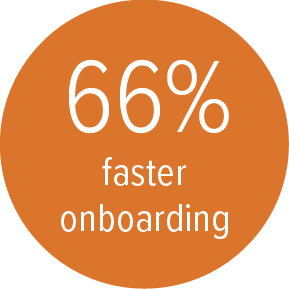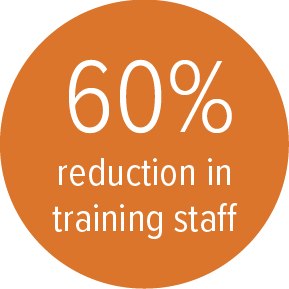Educator Onboarding
FRAMEWORKS: ADDIE + KIRKPATRICK
Goal: Accelerate and standardize onboarding for 10+ global educator roles, reducing time-to-readiness while improving consistency and quality..
Outcome: Delivered a scalable onboarding program that cut time-to-readiness by 66%, reduced training costs 60%, and improved educator performance.
This project is under NDA, so I can’t share deliverables. Below, I’ve outlined my role, process, and results.
PROJECT SNAPSHOT
Role
Training Development Specialist, Subject Matter Expert
Project
Educator Onboarding Program
Program Length
2 weeks
Project Duration
1 month
Stakeholders
Senior Training and Development Specialist, Director of Program Operations, VP of Education Operations
Tools & Platforms
Trainual LMS, Vyond animations, Google Workspace, Miro, screen recording + GIF tools, Slack, Zoom
PROBLEM
We needed to onboard educators faster, more consistently, with better quality.
We had over 500 educators across 10+ distinct roles—and were hiring 30+ more each month.
Onboarding was live, inconsistent, and time-consuming. Training relied on slide decks and resource links delivered over Slack.
There was no standard training or expectations across roles, and no way to verify new-hire readiness.
APPROACH (ADDIE)
Analysis: Mapped educator journey across all roles, identified skill/knowledge gaps, and assessed pain points in live onboarding.
Design: Selected Trainual LMS to support asynchronous learning, built a structured 2-week curriculum, and integrated scenario-based learning aligned to role-specific tasks.
Development: Created Vyond animations, walkthrough videos, and job aids; incorporated live and written assessments to verify job readiness.
Implementation: Rolled out asynchronous onboarding for new hires, and retroactive training for 500+ current educators; included Q&A calls and mentor pairing for support.
Evaluation (Kirkpatrick): Measured outcomes at multiple levels—learner satisfaction (Level 1), skill/knowledge verification (Level 2), improved educator performance (Level 3), and organizational impact (Level 4).
IMPACT
Reduced onboarding time from 6 weeks to 2 weeks
Cut training staff needs by 60%
Decreased student complaints by 30%
Improved educator consistency, confidence, and readiness across global roles


